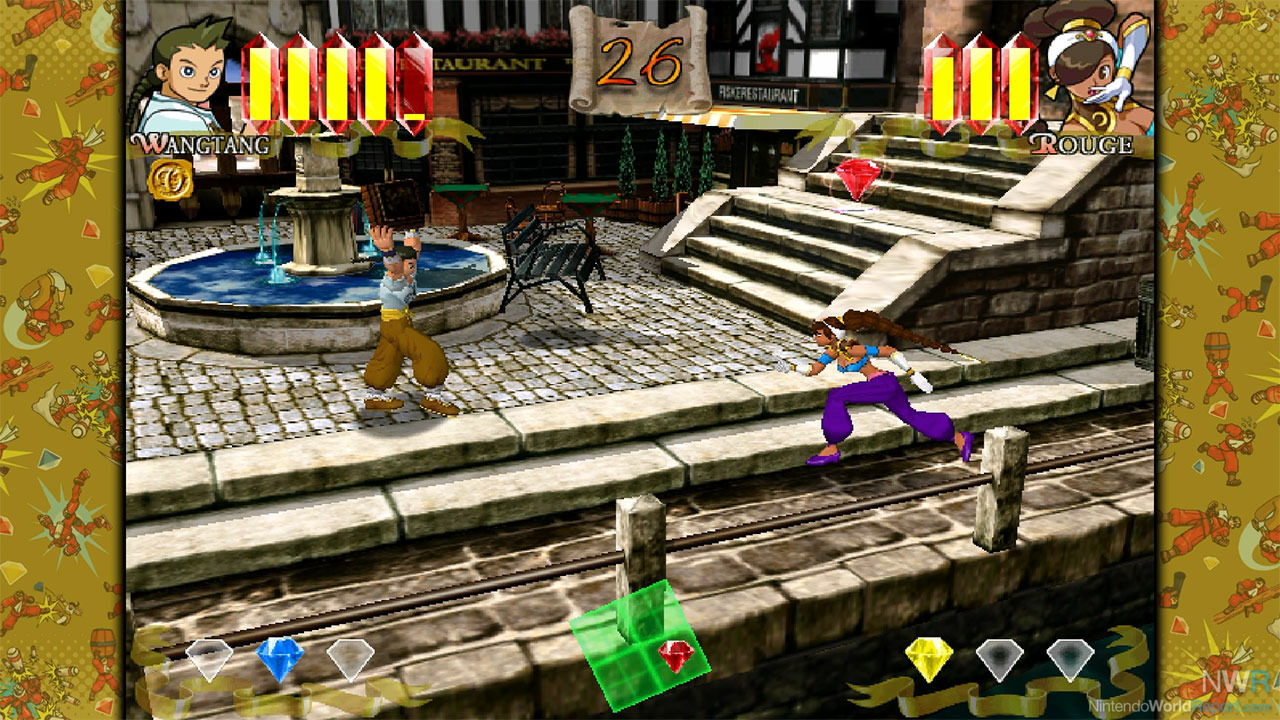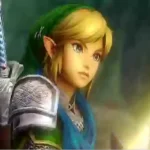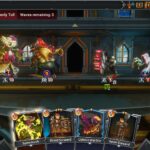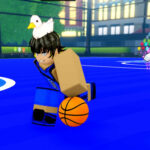Capcom has cemented its reputation as a master of fighting game compilations, consistently delivering nostalgic dives into its storied arcade history. Following successful releases like the original Capcom Fighting Collection (which brought back Darkstalkers and Puzzle Fighter) and the much-celebrated Marvel vs. Capcom Fighting Collection, the developer now presents Capcom Fighting Collection 2.
This latest offering for the Nintendo Switch boasts one of its most eclectic rosters to date, blending beloved classics with intriguing cult favorites and even a few lesser-known curiosities. After spending considerable time with the full package, it’s clear this collection aims to satisfy diverse appetites within the fighting game community.
The Eclectic Roster: What’s Inside Capcom Fighting Collection 2?
Capcom Fighting Collection 2 brings together eight distinct titles, spanning various eras and sub-genres of fighting games. This diverse lineup offers a fascinating cross-section of Capcom’s innovation and experimentation in the late 90s and early 2000s:
- Plasma Sword: Nightmare of Bilstein (1998)
- Power Stone (1999)
- Power Stone 2 (2000)
- Capcom vs. SNK: Millennium Fight 2000 Pro (2000)
- Project Justice (2000)
- Street Fighter Alpha 3 Upper (2001)
- Capcom vs. SNK 2: Mark of the Millennium 2001 (2001)
- Capcom Fighting Evolution (2004)
- Spotlight: Power Stone & Power Stone 2 – Arena Chaos Perfected
For many, the inclusion of the Power Stone series is a significant draw, and rightly so. These arena fighters defy traditional fighting game norms, offering a refreshing blend of combat and chaotic item management.
Power Stone (1999) sets players in a small, vibrant 3D arena viewed from an isometric camera. The objective isn’t just to deplete an opponent’s health bar, but to collect three mystical Power Stones scattered across the ground. Collecting these gems temporarily transforms your character into a superpowered being, granting devastating new attacks that can rapidly turn the tide of battle.
The arenas are littered with destructible environmental items and weapons, adding layers of tactical mayhem. Knocking gems out of opponents by pummeling them creates a dynamic push-and-pull, reminiscent of the Smash Ball in Super Smash Bros. While character movement can feel slightly sluggish, it’s compensated by the abundance of items and the constant threat of super-powered transformations, making for a skill-based game with exciting random elements.
Power Stone 2 (2000) evolves the concept into a full-blown party battle royale. The intimate 1v1 duels are replaced with frenetic four-player free-for-alls. All the floor items and gems return, but the added players elevate the experience into pure pandemonium. Races for gems, strategic targeting of opponents, and simply avoiding getting caught in the crossfire become paramount. Stages are far more dynamic, featuring moving platforms, vehicles, and multi-tiered environments that demand constant navigation alongside combat.
A memorable level example dumps players into an Indiana Jones-esque escape sequence, with a giant boulder giving chase. The sequel also introduces engaging boss battles, large-scale events where players cooperate to take down colossal foes, adding a fun novelty that breaks up the traditional brawling. Power Stone 2 is undoubtedly poised to be an online fan favorite within the collection.
The Crossover Kings: Capcom vs. SNK Series Deep Dive
For many fighting game aficionados, the Capcom vs. SNK series represents the pinnacle of dream match-ups, and their inclusion here is a major highlight.
Capcom vs. SNK: Millennium Fight 2000 Pro (2000) immediately plunges players into the iconic rivalry. Upon starting, you choose between a Capcom or SNK fighting “style” or “Groove,” influencing your character’s mechanics. The game even features redrawn Capcom characters in the SNK style on the select screen, a delightful artistic touch.
Combat unfolds in 2v2 matchups, with team order decided pre-match. A unique mechanic requires players to charge their super gauge by holding specific buttons, leaving them vulnerable but building power for devastating special moves. This “Dragonball-esque” charge system introduces a captivating layer of tension, forcing players to balance aggression, defense, and strategic power accumulation.
With an expansive roster focused on each company’s biggest franchises, the tempo strikes a balance between grounded movement and fast-paced aerial maneuvers. While a minor quibble, the monotonous robot announcer is a jarring contrast to the otherwise awesome gameplay.
Capcom vs. SNK 2: Mark of the Millennium 2001 (2001) builds upon its predecessor by expanding the binary style choice into several distinct “Grooves.” These include standard Street Fighter and SNK formulas, alongside more nuanced options like a system mimicking Street Fighter III’s parrying, which demands split-second forward motions to deflect attacks with no damage. This bespoke style approach significantly enhances replayability and strategic depth, making it a truly meaningful addition to the collection.
Hidden Gems & Curious Case Studies: Project Justice & Plasma Sword
Not every game in the collection is a universally acclaimed classic, but they offer valuable insights into fighting game history.
Project Justice (2000), a 2D fighter utilizing 3D polygonal character models reminiscent of early Tekken or Virtua Fighter, was a wholly new experience for this reviewer. The game features teams of three fighters, with most battles allowing you to select two to actively play with. Each team boasts its own intricate story arcs, complete with extensive dialogue.
While the detailed storytelling is appreciated, the lack of context for newcomers can make it feel like stepping into the middle of ongoing conversations. Structurally, it’s akin to the Capcom vs. SNK series, lacking on-the-fly tags but emphasizing pre-match character order. Its unique “team-up attack” super moves are a neat hook, where an alternate character briefly enters the screen for a combined assault.
However, Project Justice suffers from a significant flaw: slow, delayed button input, which is detrimental to the responsive nature required in fighting games. While a welcome curiosity for historical preservation, it’s unlikely to be a frequent revisit.
Plasma Sword: Nightmare of Bilstein (1998) unfortunately falls into the “runt of the litter” category. As an early 3D fighter with a limited button set (two weapon attacks, kick, and a sidestep), it lays out the foundational mechanics for a solid experience. It even features a special attack meter for powerful chain attacks. However, its crucial flaw lies in the movement system.
Characters feel sluggish, and there’s a noticeable wind-up between button input and on-screen action. In fighting games, immediate call-and-response is fundamental to feeling in control, and Plasma Sword struggles profoundly here, making it more of an interesting historical artifact than a consistently enjoyable play.
Timeless Classics: Street Fighter Alpha 3 Upper
For many, Street Fighter Alpha 3 Upper (2001) is the definitive version of the Street Fighter Alpha trilogy. This prequel to Street Fighter II is widely considered the pinnacle of the series, boasting the largest roster, impeccably drawn animation, and a versatile super move system that significantly impacts combat strategy.
The “Upper” edition included in this collection utilizes the Japanese version as its baseline, featuring subtle stage visual alterations and making fan-favorite characters Shin Akuma and Final M. Bison immediately selectable. While the visual enhancements might not be immediately apparent to all, the game offers a crispness and impact that many other console ports have struggled to retain. This remains, for many, the best arcade version of the game available and a personal favorite.
The “Potpourri” Package: Capcom Fighting Evolution
Capcom Fighting Evolution (2004) serves as a unique “potpourri” of characters, bringing together fighters from diverse Capcom universes into one game. It features characters from Street Fighter II, Street Fighter Alpha 3, Street Fighter III: 3rd Strike, Darkstalkers, and Red Earth. While the concept of gathering such an iconic roster is appealing, the execution feels largely like a “copy-and-paste” effort. Characters retain their original combat styles, designs, and even audio bits directly lifted from their source games.
As a result, the game is functionally sound due to the strong foundations of its individual components, but it struggles to forge its own unique identity. It feels smaller and less cohesive compared to the much better Capcom vs. SNK series, reminiscent of earlier ‘Vs.’ games that served as precursors to more fully realized crossover titles.
Essential Modern Features: Beyond the Games
Beyond the games themselves, Capcom Fighting Collection 2 integrates a suite of modern features that elevate the overall compilation experience. These quality-of-life additions are crucial for contemporary fighting game collections and should be considered industry standards. The collection includes:
- Online Matchmaking: Robust online play is essential for fighting games, and the collection provides this, allowing players to compete globally.
- Practice Modes: Dedicated modes for honing skills and learning character mechanics.
- Quick Save Features: Convenient options for saving progress at any point.
- Art and Music Galleries: Extensive galleries offering a treasure trove of concept art, promotional materials, and soundtracks, providing valuable historical context and fan service.
- Japanese & English Versions: The ability to switch between regional versions of each game, often revealing subtle differences or offering preferred voice acting.
These features significantly enhance replayability and accessibility, demonstrating Capcom’s continued commitment to delivering polished compilation experiences.
Is Capcom Fighting Collection 2 Worth the Dive on Switch?
For long-time fighting game fanatics and those with a nostalgic connection to Capcom’s arcade legacy, Capcom Fighting Collection 2 offers a compelling proposition. The presence of the Capcom vs. SNK series and the Power Stone games alone arguably justifies the price of admission, providing hours of highly engaging and unique gameplay. Street Fighter Alpha 3 Upper remains a timeless classic that holds up incredibly well.
However, the collection isn’t without its “curiosities” and games that might feel more like roster fillers. Titles like Plasma Sword and Project Justice, while historically interesting, are hampered by technical flaws that make them less likely to be revisited frequently. Newcomers to the genre might find some of the older mechanics or the lack of extensive tutorials a bit challenging, but the collection offers a fantastic opportunity to explore the diverse evolution of fighting games.
A Mixed Bag of Nostalgia and Innovation
Capcom Fighting Collection 2 on Nintendo Switch largely succeeds in its mission to bring another round of arcade classics to modern platforms. It adeptly combines the raw, skill-based action that defined a generation of fighting games with essential contemporary features like robust online play and comprehensive galleries.
While some inclusions feel more like historical footnotes than must-play experiences, the strength of titles like Power Stone and the Capcom vs. SNK series more than compensates. It’s a testament to Capcom’s enduring legacy in the genre, offering both a polished reflection of its past glories and a glimpse into its more experimental ventures. Whether you’re a seasoned fighting game veteran or a curious newcomer, this collection offers a rich, if sometimes uneven, journey through a pivotal era of competitive gaming.








